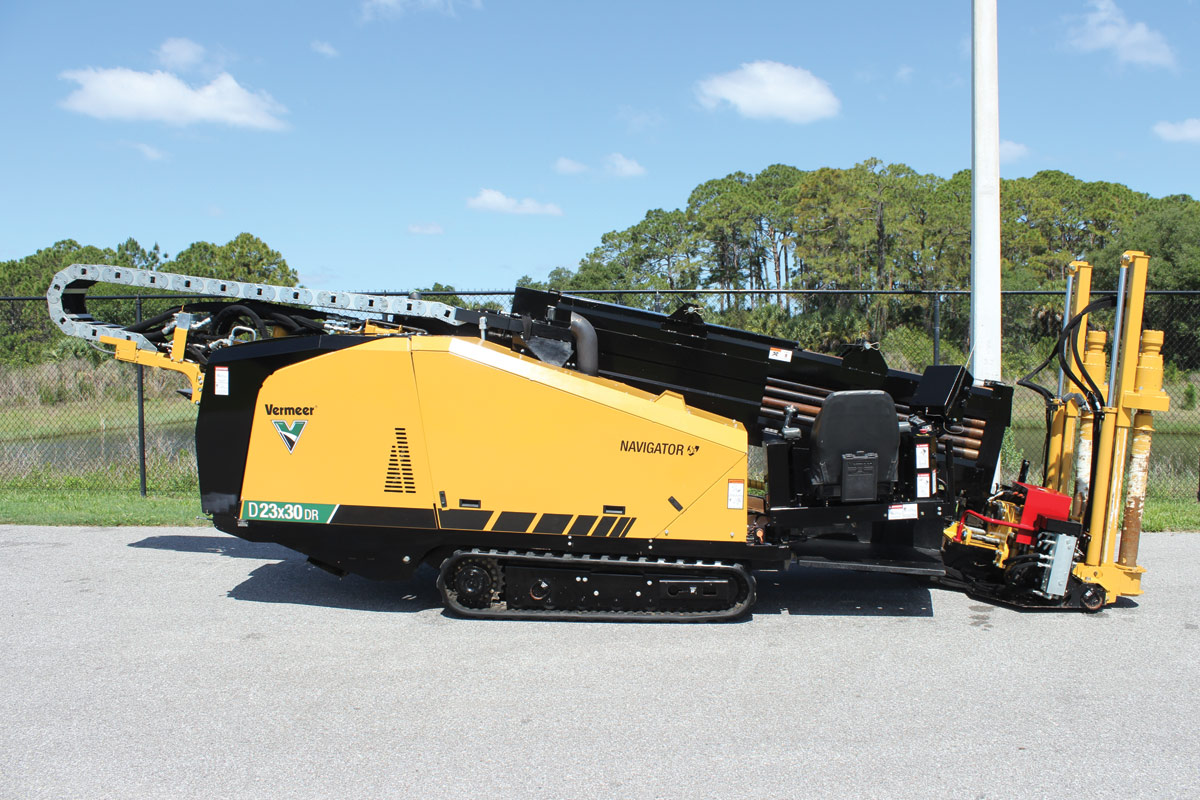
Using FELL to Find the Leaks in Napa Valley
The Napa Valley is a famous grape-growing region producing some of the world’s finest wines.
For the 2022-23 rainy season, the National Weather Service station at Napa State Hospital recorded more than 33 in. as of the end of March 2023, a 32 percent increase, compared to the annual average of 25 in..
Largely seen as positive for grape vines, record rainfalls had consistently overwhelmed the sanitary sewer of one Napa Valley town, responsible for countless number of sewer backups and sewer overflows.
Working with SKL Solutions, of Petaluma, California, Stephen Miskis met with town officials that had enough of overflows at its treatment plant resulting from wet weather events. And, after years of relying on closed-circuit television (CCTV) inspections that were not able to accurately or reliably find where water was entering its system, it was time for a different approach.
For many agencies, if CCTV inspection does not provide conclusive evidence of infiltration, i.e. where water can enter a system, the agency or its consulting engineers have historically blamed service laterals. Most notably illegal downspouts, poorly installed sewer laterals and defective tap connections.
Artificial intelligence (AI) briefly gave hope to visual inspection technologies. At least providing consistent reporting using image recognition software that could quickly compare current video frames to a database of stored images.
But, the inability for CCTV images to tell the difference between superficial cracks and cracks that go through the wall of a pipe; inability for CCTV cameras to see up and through the bell and spigot of a pipe joint to confirm sources of infiltration; and inability to determine the watertightness of service connections, especially when gaskets are surround the outside of a pipe, limits the use of CCTV and AI-CCTV for rehabilitation selection, decision support, and post-rehabilitation quality assurance.
As a result, SKL Solutions recommended the use of Electro Scan to assess 25 percent of the town’s sanitary sewer system.
Representing a next generation machine-intelligent sensor that can pinpoint defect locations and estimate leakage rates in gallons per minute (GPM), public officials were interested in how accurate the technology could identify specific pipe locations where infiltration was occurring.
More importantly, officials were interested in whether the technology could identify the increase in flows measured at the treatment plans where its single treatment plant, rated at 1 million gallons per day (MGD) treatment capacity, could measure more than 2.5 MGD after wet weather events.
In December 2023, Electro Scan Inc. conducted its inspection of 17,662 lf, including both sewer mains and lateral leak detection using its advanced technology, also referred to as focused electrode leak location (FELL).
Already adopted by leading American and British water utilities looking to replace CCTV cameras to accurately locate and measure sources of infiltration, precision-based defect identification allows both pre-rehabilitation assessments to prioritize repairs and relining projects and post-rehabilitation quality assurance testing to confirm pipes are watertight.
“Airtight means Electro Scan and data does not lie,” states Miskis. Results of the Electro Scan inspection project were groundbreaking.

Sewer mains were determined to contribute an estimated 1,082,218 gallons per day (GPD) or 98 percent of wet weather flows. Defects from laterals were responsible for 2 percent of total estimated defect flows.
Prior CCTV reports using industry coding standards had identified few, if any, sources of infiltration. In many cases, partial pipe repairs and point repairs had been completed based on CCTV inspections that only replaced a portion of a pipe; finding that multiple leak locations at joints and service connections were found in un-repaired sections of pipe not previously identified using CCTV camera inspection.
FELL standards represent a new breed of inspection technology not dependent on the identification of visual anomalies that are limited only to the inside of the pipe.
Instead, FELL uses low voltage high frequencies electric current, test results are based on the properties of physics and Ohms law able to automatically detect leakage pathways.

Town-Wide Infiltration / Leakage Assessment Project. (Source: Electro Scan Inc.)
Representing a three-dimensional assessment of interior pipe walls and pathways to exterior exits, if electric current can leak from a pipe, crack, joint, service connection, etc. and return to its grounding stack, then the pipe will leak water, too.
More importantly, the amount of current passing through the opening can be measured and translated to determine the size of the opening or orifice, and therefore estimated gallons per minute or liters per minute of defect flow.
Using water as a conductor, allowing to assess fully surcharged sewer mains or added water from a jet truck to allow focused electrical current to systematically assess the condition of a pipe wall, impedance from grease, silt, debris, or roots are not a factor allowing FELL to generate repeatable results up to 4 years between assessments.
In 2017, Trenchless Technology magazine published our article that presented results from the City of Racine, Wisconsin, where cured-in-place pipe (CIPP) acceptance was studied. Representing a multi-year investigation comparing flow monitoring with FELL, it was found that FELL accurately measured a 75 percent reduction in defect flows after rehabilitation – the same results measured by flow monitoring after two similar wet weather events occurring nearly three years apart.
The difference: FELL testing results were immediately measured following post-rehabilitation CIPP relining, with individual pipe comparisons available, while flow monitoring results took several years and only able to address a total estimated reduction for an area and not individual pipes.
CCTV still has an important role in sewer maintenance activities. Particularly to ensure pipe alignments are reasonable, confirm contractor debris is removed, ensure crossbores have not occurred from third-party pipe installations, and fats, oils and grease (FOG) can be scheduled for cleaning.
However, no longer should capital expenditures be exclusively based on incomplete or inaccurate visual anomalies that don’t correctly assess the water tightness of cracks, joints, and service connections of pipes.
Chuck Hansen is chairman and CEO of Electro Scan Inc.




